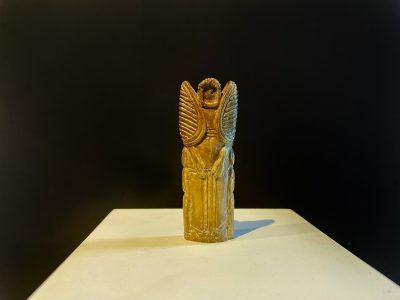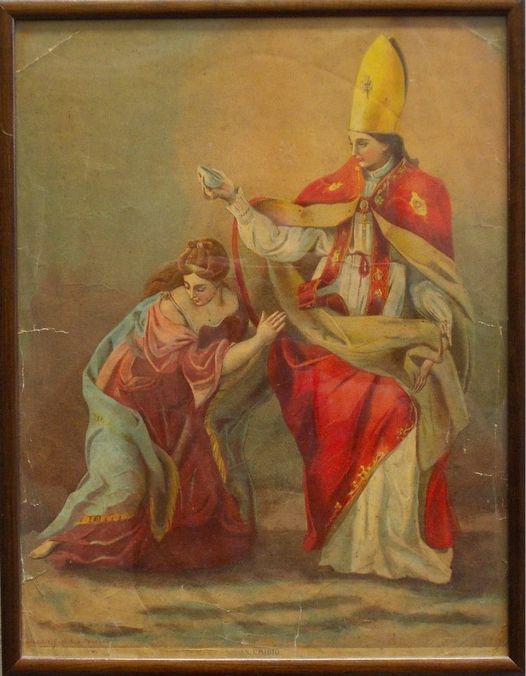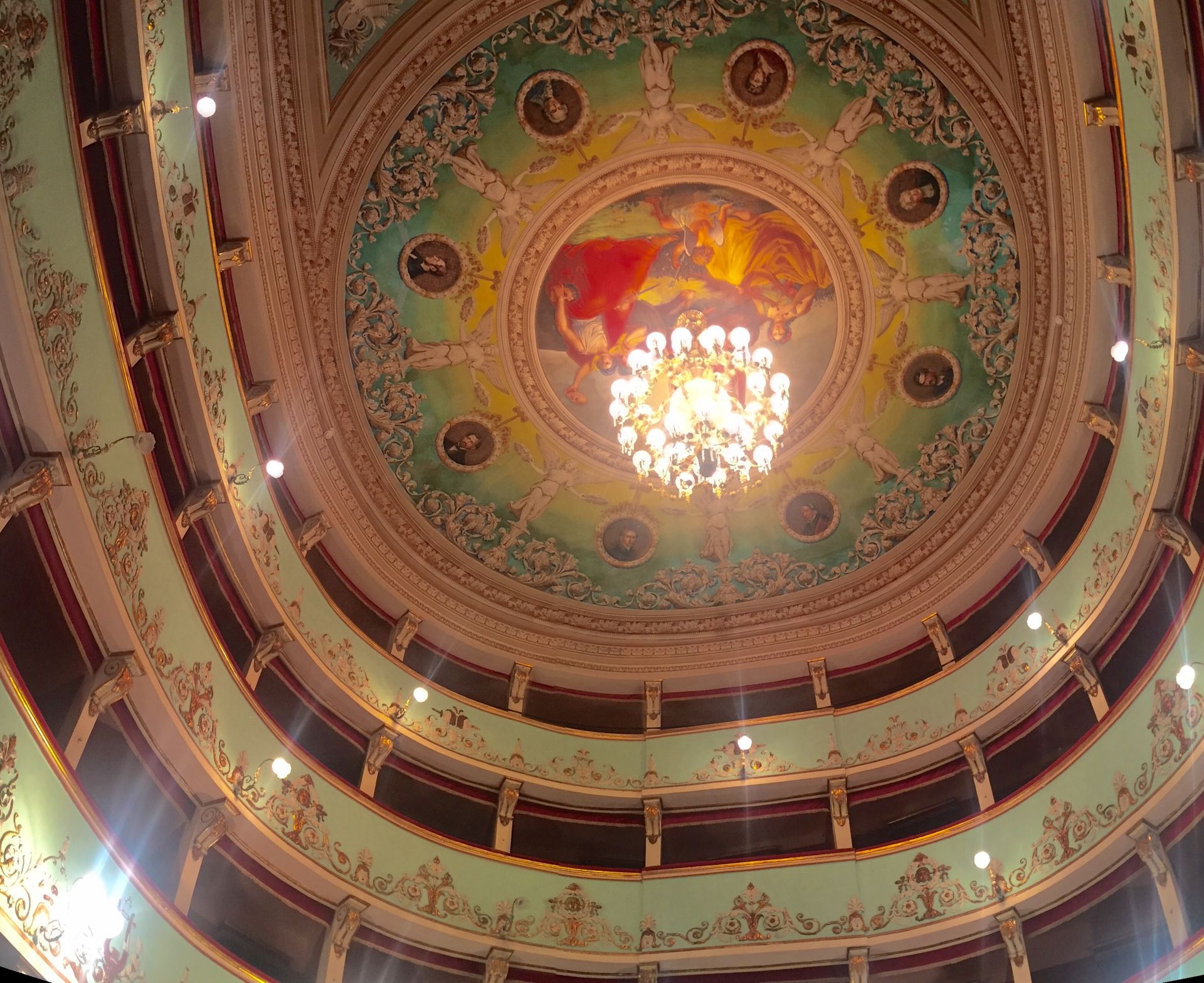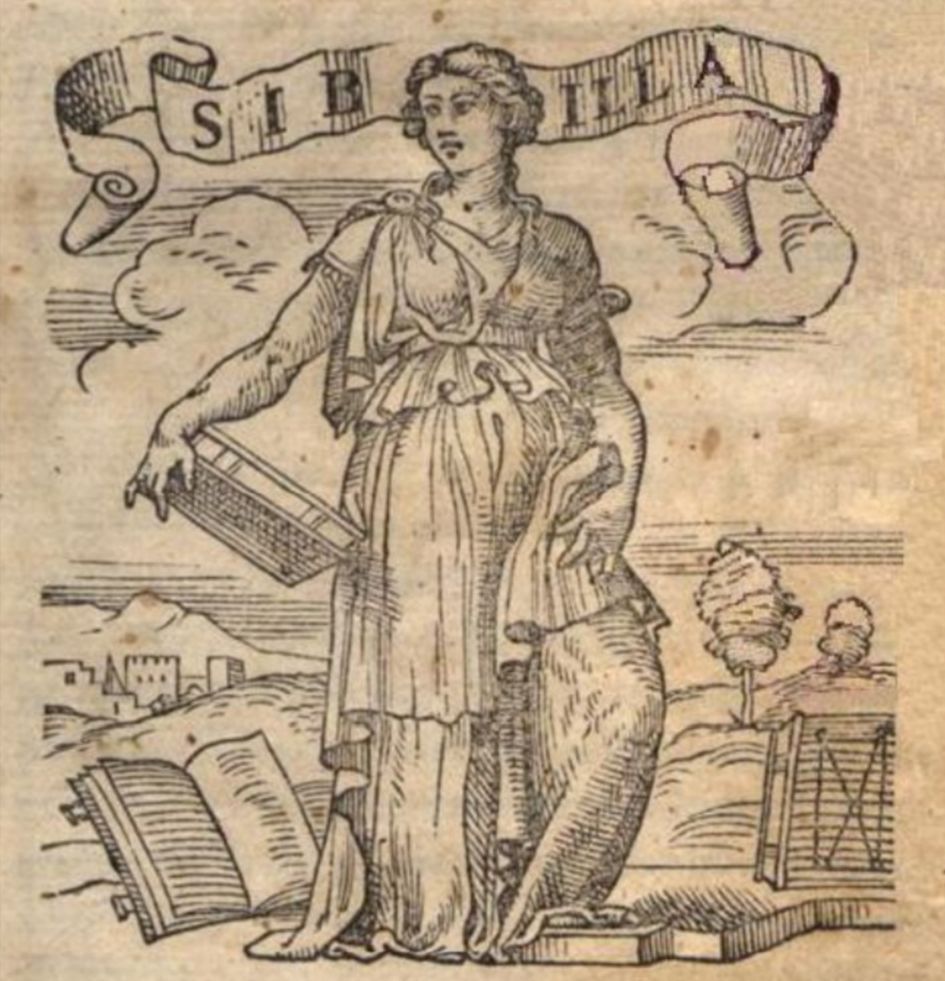MYTHS AND LEGENDS OF OUR LAND
All our rooms have a name that leads back to our history, our culture and our popular folklore, intertwining history, myth and tradition.
A story that invites us to reflect on the profound bond between man and his territory, on the ability to transform the imagination into an element of identity and on the evocative power of legends, capable of transcending the centuries and continuing to excite.
Dea Cupra:
A Picene Divinity between Myth and Reality
Introduction
The Goddess Cupra emerges as a central figure in the religious pantheon of the Piceni, a people who inhabited central Italy between the 9th and 3rd centuries BC. Venerated as a primary female divinity, her cult permeated the social and cultural sphere of the Piceni, deeply intertwining with their life
daily.
The Origins and the Cult
The origins of the Cupra cult remain shrouded in mystery. Some theories link it to pre-Indo-European deities, while others hypothesize a connection with the Greco-Roman world. Regardless of her origins, Cupra became the most important goddess for the Picenes, symbolizing the creative force and fertility of nature.
The Divine Facets of Cupra
Cupra was not simply a fertility goddess. It took on multiple facets, embodying different spheres of the natural and human world. Era:
Mother Goddess: Cupra represented the Great Mother, dispenser of life and protector of gods
children. Her figure was associated with motherhood and care, essential elements for the survival of Picena society.
Goddess of Water: Deeply linked to springs, rivers and the sea, Cupra was venerated as a source of life and purification. Its sanctuaries often stood near waterways, underlining this intrinsic connection.
Goddess of Healing: The healing properties of the sacred waters associated with Cupra were widely recognized. The Piceni turned to the goddess to obtain relief from illnesses and infirmities, relying on her beneficial power.
Goddess of War: In some contexts, Cupra was also associated with war and protection in battle. The Picene warriors invoked his strength and courage before facing their enemies.
Symbols and Depictions
The goddess Cupra was not uniformly depicted. Some statues represent her as a majestic woman, dressed in sumptuous clothes and adorned with jewels. Other finds show it associated with specific symbols, such as the dove, emblem of peace and prosperity, or the patera, a ritual dish used for libations.
Cult:
The center of the cult of Cupra was the sanctuary of Cupra Marittima, a town a few kilometers from the sea. Here stood an imposing temple, a destination for pilgrimages and propitiatory rites. The Piceni celebrated the goddess with votive gifts, animal sacrifices and solemn processions. The priestesses played a fundamental role, guardians of sacred knowledge and intermediaries between the divine and the people.

Syncretism:
With the Roman conquest of the Piceno territory, the cult of Cupra did not disappear completely. The goddess was assimilated to the figure of Venus and, in particular, with Bona Dea, a Latin deity associated with fertility and healing. His name remained linked to the place, so much so that the Roman city built near the sanctuary took the name of Cupra Marittima, thus preserving the memory of this ancient divinity.
Conclusion:
The Goddess Cupra represents a fundamental piece for understanding the complex identity of the Piceni. His image, multifaceted and rich in meaning, embodied the values and beliefs of a society deeply linked to the earth and the cycle of life. His legacy lives on today, fueling the fascination and mystery that surround this fascinating figure of the ancient world.
Police:
Between legend and history, an immortal soul
In the Marche, where the Adriatic gives way to rolling hills and majestic mountains, stands the Mount of Ascension, a place surrounded by an aura of mystery and charm. Located entirely in the province of Ascoli Piceno, it stands astride the Tronto and Tesino valleys, dominating the territory with its height of 1,110 metres. Among its pristine peaks, the echo of a legend that has spanned the centuries still resonates, that of Polisia, a young woman with an indomitable heart and unshakable faith. Polisia, daughter of the Roman Prefect Polimio, lived in an era of great upheavals, when Christianity began to spread, bringing with it new ideas and values. In contrast to her father's beliefs, the young girl embraced her new faith, finding comfort and hope in the teachings of Christ. His choice did not go unnoticed. Polimio, furious at his daughter's conversion, ordered his soldiers to capture her and bring her back. Polisia, rather than deny her faith, chose to escape, taking refuge among the harshness of the Mount of Ascension. Hunted by soldiers, it is said that Polisia reached the edge of a precipice, with certain death looming on the horizon. In that moment of desperation, the young woman invoked divine intervention. And the miracle happened. The mountain opened, welcoming her into its bosom and saving her from her father's fury. Even today, legend has it that Polisia lives inside the mountain, weaving a golden dress for her heavenly husband. Her spirit hovers among the woods and rocks, silent protector of this sacred land. But Polisia is more than just a legend. Her name is inextricably linked to the Mount of Ascension, so much so that some scholars hypothesize that the name of the mountain itself derives from her.
In addition to its legendary charm, Mount Ascension offers a naturalistic panorama of rare beauty. The hiking trails wind through lush forests, flowering meadows and breathtaking views, giving visitors an immersive experience in uncontaminated nature. On the summit of the mountain, the Sanctuary of the Madonna dell'Ascensione dominates, a destination for pilgrimages since the Middle Ages. A place of peace and spirituality, where you can breathe an atmosphere of deep devotion. The legend of Polisia and the Mount of Ascension represent a priceless heritage, a reminder to faith and courage in the face of adversity. An invitation to rediscover our roots and enhance the beauty that surrounds us, not only with our eyes, but also with our hearts.

Golden Serpent:
Legend and Symbol
Introduction
Offida, a picturesque village in the Marche region perched on a hill, jealously guards a legend that is inextricably intertwined with its very identity: the myth of the Golden Serpent. A fantastic tale that tells of a prodigious creature that crossed the city, leaving an indelible mark in the collective memory and shaping the local culture.
The legend and its symbolisms
According to popular tradition, a serpent of enormous dimensions and golden as the sun wound its way through the streets of Offida one day, following a route that coincided with the current Corso Serpente Aureo, the main artery of the village. His passage was a miraculous event, welcomed with amazement and veneration
by the inhabitants. It is said that the creature brought with it luck and prosperity, becoming a symbol of good luck for the community. The figure of the serpent, present in various cultures and mythologies, takes on multiple meanings. In this
case, the Golden Serpent could represent life force, ancient wisdom, the power of renewal or even a protective deity. Its association with gold, a precious and unalterable metal, underlines its sacred value and incorruptibility.
The connection with the territory and history
The legend of the Golden Serpent fits perfectly into the historical and geographical context of Offida. In fact, already in prehistoric times, the area was inhabited by populations who venerated the serpent as a symbol of chthonic divinities, linked to the earth and its mysteries. Numerous archaeological finds, including statues and artefacts depicting snakes, testify to this devotion. Furthermore, the geographical position of Offida, perched on a hill between two rivers, may have contributed to the birth of the legend. The sinuous course of the rivers, similar to the body of a snake, and the presence of water springs, an element often associated with the snake as a creature linked to the underground world, may have fueled the collective imagination and given life to the myth. The legend of the Golden Serpent has had a profound impact on the culture of Offida, permeating every aspect of the social and artistic life of the village. Both the Offida Theater and the main street take their names from it.

Conclusion
The legend of the Golden Serpent of Offida represents a fascinating example of how folklore and popular imagination can enrich the cultural heritage of a place, intertwining history, myth and tradition. A story that invites us to reflect on the profound bond between man and his territory, on the ability to transform the imagination into an element of identity and on the evocative power of legends, capable of transcending the centuries and continuing to excite.
Sibyl:
Legend and myth of the Apennine Sibyl
and fairies
Legend and myth of the Apennine Sibyl and the fairies The Sibillini Mountains, located in the heart of Italy, between Marche and Umbria, owe their name to the legendary figure of the Sibyl, a prophetess who is said to live inside Mount Sibilla, from which it takes the name the highest peak of the mountain group. According to legend, the Sibyl lived in a cave located on the top of Mount Sibilla, also known as the Fairy Cave. This cave was considered the entrance to her underground kingdom, a magical and mysterious place where the Sibyl kept her secrets and prophesied the future. The Sibyl, a central figure in popular tales and beliefs, has been described in different ways over the centuries. Some describe her as a sorceress or an enchantress, others as a fairy or a priestess with supernatural powers. Regardless of her various representations, the Sibyl remains a fascinating and mysterious image that has captured the imagination of generations. According to legend, the Sibyl was good and enchanting, knowledgeable about astronomy and medicine, and gave prophetic responses in a language that was not easy to interpret. She was surrounded by fairies who came out at night and came back before dawn so as not to be excluded from the Sibyl's kingdom. The fairies, however, had contact with man, going down to the valley to teach the young women how to spin and weave wool, and to meet the young shepherds and teach them how to skip. It is said that to move from one town to another, the fairies borrowed horses, which in the morning were found tired, sweaty and with their manes magically braided. The fairies of legend, however, are supernatural creatures and their appearance is that of young women with goat feet which were cleverly hidden, from the shepherds' eyes, under their skirts and which they use to easily climb the steep mountain paths. Even the crown of Mount Sibilla would have been due to the blows of the hooves of the fairies, who after a long night of dancing with the shepherds, would have quickly climbed the mountain to return to the home of the Sibilla. From here was born the legend of bewitched loves which linked them to some men, who, once they came into contact with the fairies, were sometimes ensnared and taken away from the human world, and remained alive until the end of the world, although forced to live in the cave, in the way of the night with the fairies and the priestess. There are two main works in literature that deal with the legend of the Sibyl, both dating back to the fifteenth century: "La Salade" by Antoine de la Sale and "Il Guerrin Meschino" by Andrea da Barberino.




